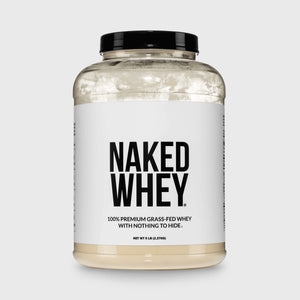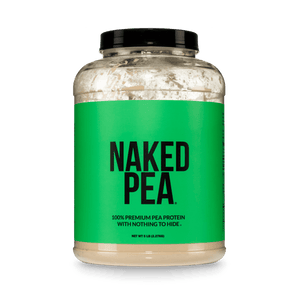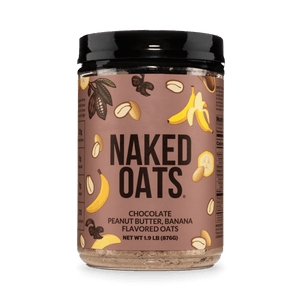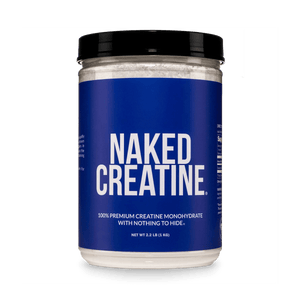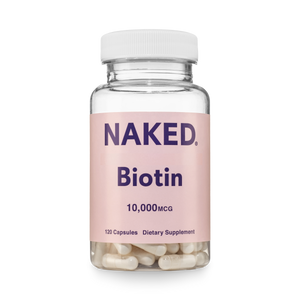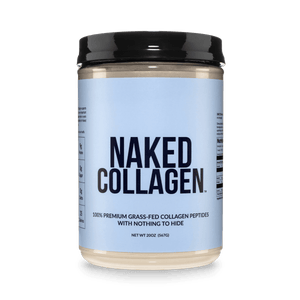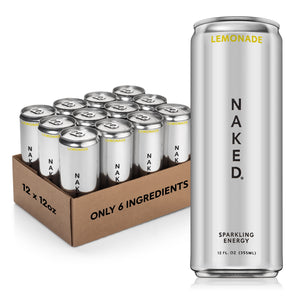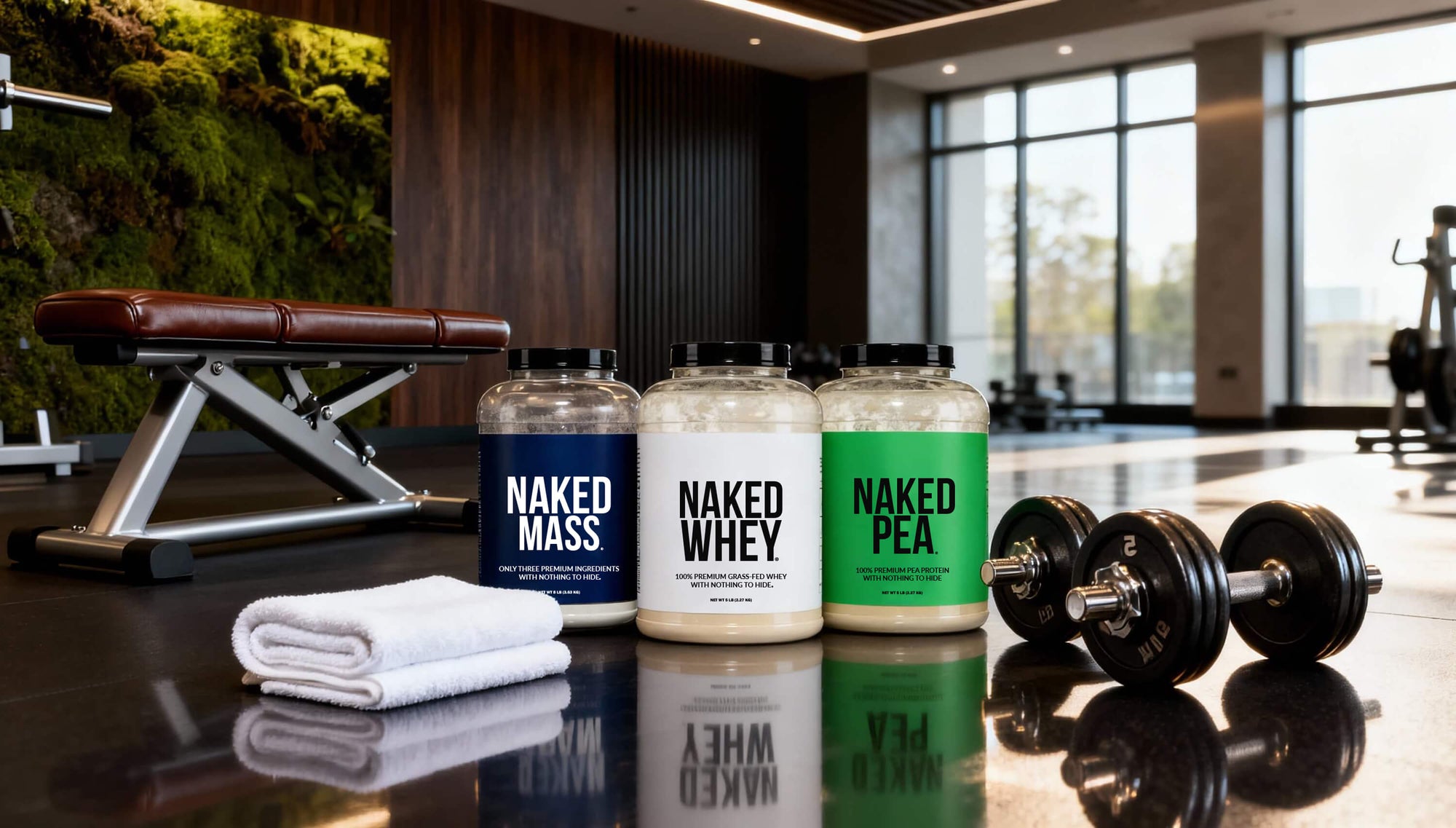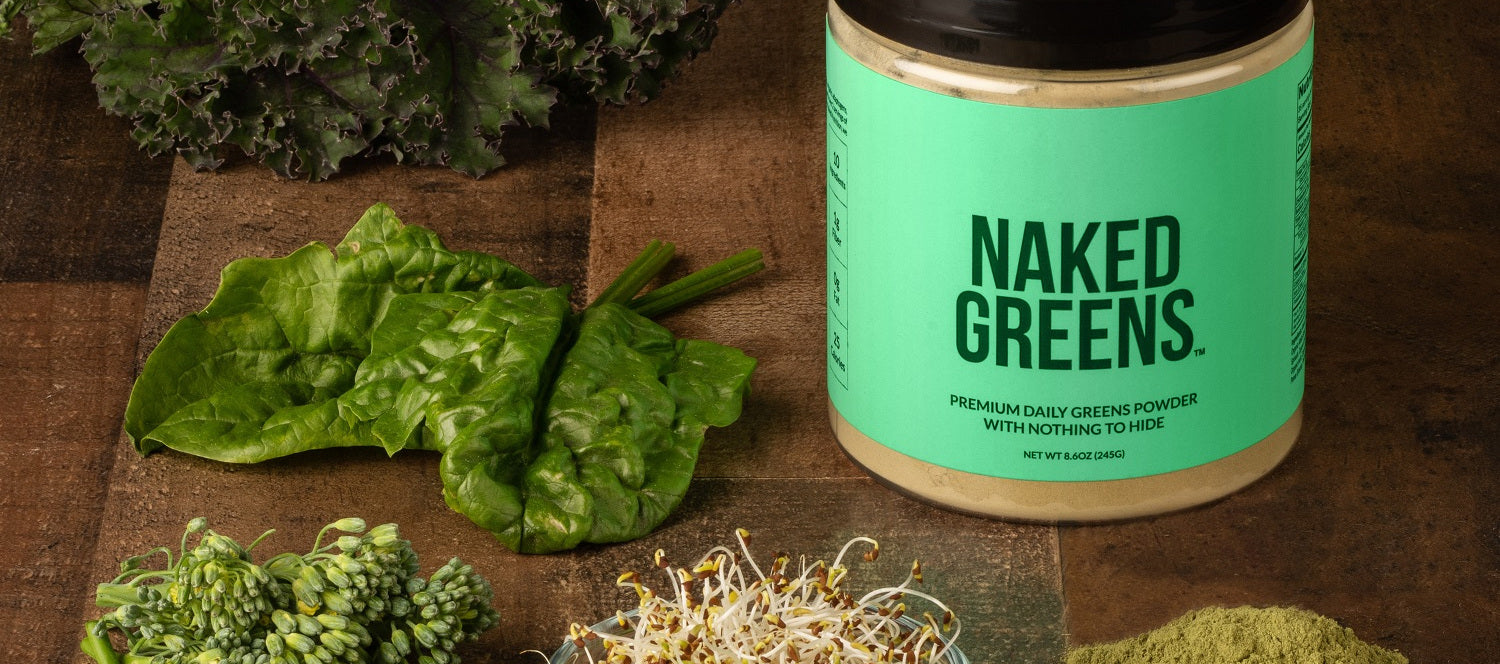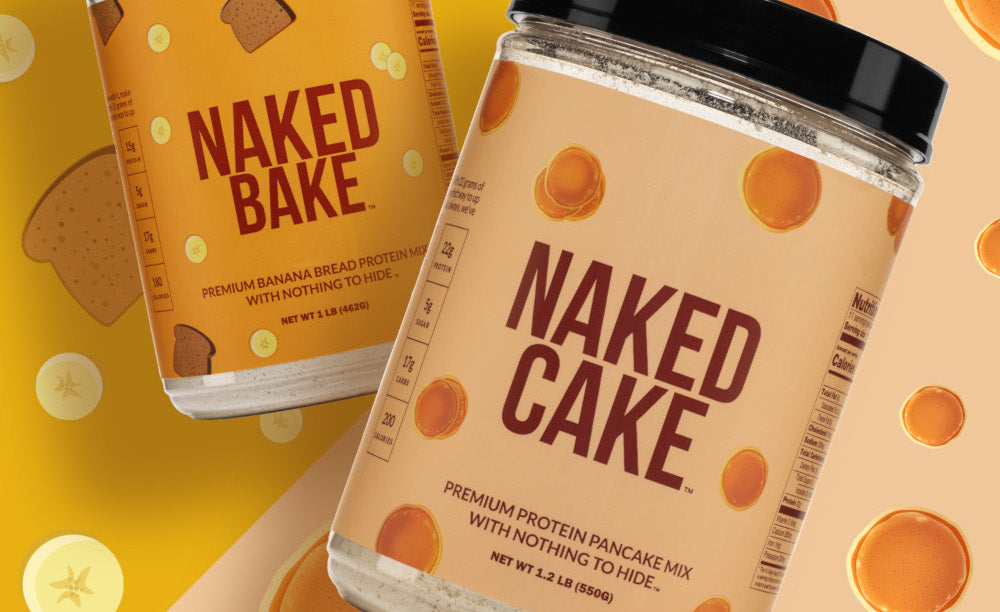Struggling to build muscle while shedding fat? The answer might be on your plate. Protein isn't just another nutrient—it's the foundation of your fitness journey, providing the building blocks your body needs to transform your physique.
When you're working toward that lean, muscular look, finding the optimal protein balance becomes crucial. Too little, and your muscles won't have the resources to grow and recover. Too much, and those extra calories might sabotage your fat loss goals.
You need to strike the perfect balance between fueling muscle growth and supporting fat loss simultaneously.
In this guide, you'll discover exactly how much protein your body requires to build impressive muscle while torching stubborn fat, along with practical tips to hit your targets consistently and efficiently.
The Role of Protein in Body Composition

Protein serves as the fundamental building block for muscle tissue and plays a critical role in body composition transformation. Understanding how protein functions in your body helps explain why proper intake is non-negotiable for simultaneously building muscle and losing fat.
When you consume protein, your body breaks it down into amino acids that perform multiple functions related to body composition:
-
Muscle protein synthesis - Amino acids stimulate this cellular process that builds new muscle tissue after resistance training
-
Metabolic rate enhancement - Protein digestion requires 20-30% more energy than processing carbohydrates or fats, increasing daily calorie burn
-
Appetite regulation - Protein activates satiety hormones that reduce hunger, making it easier to maintain a calorie deficit
-
Muscle preservation - Adequate protein intake prevents muscle breakdown during weight loss, ensuring fat—not muscle—is primarily lost
Research published in the Journal of the International Society of Sports Nutrition demonstrates that higher protein intakes (1.6-2.2g per kg of bodyweight) maximize muscle growth while supporting fat loss when combined with resistance training.
This occurs because protein simultaneously supports anabolic processes while creating a metabolically favorable environment for fat reduction.
Your body composition goals depend on maintaining a positive nitrogen balance—the state where your body retains more protein than it breaks down. Without sufficient protein intake, even the most perfect training program fails to yield significant muscle growth or optimal fat loss.
A 2016 single-blind, randomized, parallel-group prospective trial demonstrated the impact of protein during a calorie deficit.
This study found that consuming 2.4 g of protein per kilogram of body weight per day during a calorie deficit promoted increases in lean body mass and fat loss more effectively than 1.2g per kilogram, when combined with resistance exercise.
Understanding Your Protein Needs

Determining the right amount of protein for your body is essential for achieving both muscle growth and fat loss. Your protein requirements depend on several factors, including your body weight, activity level, and specific fitness goals.
Calculate Your Baseline Protein Requirements
The standard Recommended Daily Allowance (RDA) for protein is 0.8 grams per kilogram of body weight (0.36g per pound), but this minimal amount isn't sufficient for muscle building or fat loss.
Research shows that for optimal muscle growth and recovery, you need between 1.6-2.2 grams of protein per kilogram of body weight daily (0.7-1g per pound) (Schoenfeld & Aragon, 2018; Phillips & Van Loon, 2011).
Studies have demonstrated that consuming at least 1.6g/kg leads to greater gains in muscle mass compared to lower protein intakes. To calculate your baseline needs, multiply your weight in kilograms by 1.6 to determine your minimum protein target for muscle building.
Activity Level Adjustments
Your activity level significantly impacts your protein requirements. The more intense your training, the higher your protein needs become.
For individuals engaged in regular strength training while trying to lose fat, aim for the upper range of 1.8-2.4g of protein per kilogram of body weight (Hector & Phillips, 2017).
This increased intake helps preserve muscle mass during periods of caloric deficit and supports recovery from intense training sessions.
If you're very active with multiple training sessions per day or performing high-volume resistance training, staying at the higher end of this range provides better muscle protection and recovery benefits.
Adjust your protein intake based on training frequency, intensity, and whether you're in a calorie surplus (building) or deficit (cutting).
Optimal Protein Intake for Muscle Building

Building muscle effectively requires consuming adequate protein to support muscle protein synthesis. Research consistently shows that specific protein amounts optimize muscle growth and strength gains for different populations.
Research-Backed Recommendations
Scientific studies establish clear guidelines for protein intake based on age and training status.
For most individuals, consuming between 1.6 and 2.2 grams of protein per kilogram of body weight daily provides optimal results for muscle building (Schoenfeld & Aragon, 2018; Phillips & Van Loon, 2011).
This translates to 98-131 grams of protein for someone weighing 180 pounds (81.8 kg).
Younger adults benefit from slightly higher intakes of ≥1.6 grams per kilogram daily to maximize muscle protein synthesis and recovery.
Older adults (≥65 years) achieve optimal results with 1.2-1.59 grams per kilogram when combined with resistance exercise.
Middle-aged adults are somewhere in the middle. A 2021 study published in the American Journal of Physiology: Endocrinology and Metabolism highlights the difference in protein’s effects on middle-aged adults between 40 and 64 years old.
This 10-week study demonstrated that high protein intake (1.6g/kg/day or more) does not provide further benefits in muscle or lean mass gain during resistance exercise compared to moderate protein intake (1.2g/kg/day).
Recent research indicates that leucine-enriched protein supplements can be particularly beneficial for older adults to prevent muscle loss (Kang et al., 2020).
These specialized supplements can help enhance muscle protein synthesis in populations that typically experience anabolic resistance.
Research indicates a plateau effect occurs with protein supplementation beyond certain thresholds, suggesting that extremely high intakes don't provide additional muscle-building benefits.
Timing Your Protein Consumption
Strategic protein timing enhances muscle-building results throughout your training cycle.
Distributing protein intake across 4-5 meals throughout the day maintains elevated muscle protein synthesis rates compared to consuming the same amount in fewer, larger servings (Yasuda et al., 2019).
Research by Schoenfeld & Aragon (2018) indicates that consuming more than 20-25 grams of protein in a single meal may not further enhance muscle protein synthesis, as excess protein is oxidized or converted to other compounds.
This supports the practice of spreading your daily protein across multiple meals rather than concentrating it in one or two large servings.
Consuming 20-40 grams of high-quality protein within 30 minutes after workouts takes advantage of the anabolic window when your muscles are most receptive to nutrients.
Including protein-rich foods at breakfast may jumpstart muscle protein synthesis after overnight fasting periods.
According to a 2025 scoping review of 15 studies on the effects of breakfast protein intake on muscle mass and strength, consuming a protein-rich breakfast has potential benefits in increasing muscle mass; however, the exact relationship remains unclear.
Pre-sleep protein consumption, particularly slow-digesting options like casein, provides a steady amino acid release during sleep to support overnight recovery.
A systematic review on pre-sleep casein determined that consuming at least 40 g of casein protein 30 minutes before sleep and after a bout of resistance exercise in the evening may be effective in facilitating muscle recovery.
For early morning training sessions, having a protein source before exercise prevents muscle breakdown during intense workouts.
Protein Requirements for Fat Loss

Protein intake becomes even more critical when your primary goal is fat loss while preserving muscle mass.
Research shows that strategic protein consumption helps maintain lean tissue during caloric restriction and enhances the body's fat-burning processes.
Creating a Caloric Deficit Without Losing Muscle
Creating a sustainable caloric deficit requires careful protein management to prevent muscle breakdown.
When you consume fewer calories than you burn, your body needs sufficient protein (1.8-2.4g per kg of body weight) to preserve existing muscle tissue (Hector & Phillips, 2017).
This higher protein intake serves as a protective mechanism against catabolism—the breakdown of muscle that often occurs during weight loss.
Protein also has a higher thermic effect compared to fats and carbohydrates, meaning your body burns more calories digesting protein-rich foods, which further supports your fat loss efforts.
Higher Protein Needs During Cutting Phases
Cutting phases demand increased protein consumption to compensate for the caloric deficit's impact on muscle preservation.
Research indicates that during weight loss, especially for athletes, a protein intake of 1.6 to 2.4 grams per kilogram per day is suggested to preserve muscle mass while losing fat (Hector & Phillips, 2017; Phillips & Van Loon, 2011).
This elevated intake counteracts the physiological stress of caloric restriction and helps maintain nitrogen balance despite fewer total calories.
For example, a 175-pound (79.5 kg) individual would need approximately 143-190 grams of protein daily during a cutting phase, compared to 127-143 grams during maintenance phases.
The specific protein requirements may vary based on the severity of your caloric deficit and your training intensity. More aggressive cutting phases or higher training volumes may necessitate protein intake at the upper end of this range.
Best Protein Sources for Body Recomposition

Selecting high-quality protein sources is essential for effective body recomposition. The right proteins provide the complete amino acid profile needed to support muscle growth while facilitating fat loss through increased satiety and thermogenesis.
Animal-Based Protein Options
Animal proteins offer complete amino acid profiles with high biological value, making them excellent choices for body recomposition goals.
Lean meats like chicken breast (31g protein per 100g) and turkey (29g protein per 100g) provide protein with minimal fat content.
Eggs deliver 6-7g of protein each and contain leucine, a critical amino acid for muscle protein synthesis.
Fish varieties such as salmon and tuna offer 20-25g of protein per 100g serving while providing beneficial omega-3 fatty acids that support recovery.
Dairy products, including Greek yogurt (10g protein per 100g) and cottage cheese (11g protein per 100g), contain casein protein that digests slowly, providing a sustained amino acid release ideal for between meals or before bedtime.
Plant-Based Protein Alternatives
Plant-based proteins can effectively support body recomposition when strategically combined to ensure complete amino acid profiles.
Legumes like lentils (9g protein per 100g) and chickpeas (8g protein per 100g) provide protein alongside beneficial fiber that increases satiety during fat loss phases.
Tofu and tempeh contain 8-19g of protein per 100g portion and represent complete protein sources for those avoiding animal products.
Quinoa stands out among grains with 4-5g of protein per 100g portion and includes all nine essential amino acids.
Plant-based protein powders made from pea, hemp, or rice proteins offer convenient options containing 20-25g of protein per serving.
For optimal results, combine complementary plant proteins throughout the day to ensure you're getting the full spectrum of amino acids needed for muscle synthesis and recovery.
Common Protein Myths Debunked

Myth #1: More Protein Is Always Better
Consuming excessive protein doesn't automatically lead to more muscle growth. Your body can only utilize a certain amount of protein for muscle protein synthesis at once.
Research shows that the optimal range is 1.6-2.2g per kg of body weight for muscle building, with slightly higher needs (1.8-2.4g/kg) during fat loss phases (Schoenfeld & Aragon, 2018; Hector & Phillips, 2017).
Research indicates that consuming more than 20-25 grams of protein in a single meal may not further enhance muscle protein synthesis, as excess protein is oxidized or converted to other compounds (Schoenfeld & Aragon, 2018; Yasuda et al., 2019).
Exceeding these amounts doesn't provide additional benefits and may simply be converted into energy or waste.
Myth #2: All Protein Should Be Consumed Post-Workout
While post-workout protein is important, distributing your intake evenly throughout the day is more effective for maintaining muscle protein synthesis.
Consuming protein-rich meals evenly spread throughout the day can enhance muscle mass maintenance (Yasuda et al., 2019).
Aim for 20-25g of high-quality protein at each meal rather than loading all your protein into one or two large servings. This even distribution keeps amino acids available in your bloodstream throughout the day, supporting continuous muscle repair and growth.
Myth #3: Plant Proteins Are Inferior for Muscle Building
Plant-based proteins can effectively support muscle growth when properly combined to ensure a complete amino acid profile.
While individual plant proteins may have lower bioavailability compared to animal sources, strategic combinations of legumes, grains, nuts, and seeds provide all essential amino acids needed for muscle protein synthesis.
Many successful bodybuilders and strength athletes follow plant-based diets while achieving impressive physiques.
Myth #4: Protein Makes Women Bulky

Women often avoid higher protein intakes, fearing unwanted muscle bulk. This myth ignores fundamental physiological differences between sexes.
Women typically have lower testosterone levels, making it difficult to build significant muscle mass. Higher protein intake (1.6-2.2g/kg) helps women achieve a toned, defined physique while supporting fat loss, not a bulky appearance.
Myth #5: Protein Damages Kidney Function
For healthy individuals, research consistently shows that higher protein intakes within the recommended range (1.6-2.4g/kg) don't negatively impact kidney function.
This myth originated from studies on people with pre-existing kidney disease. If you have healthy kidneys, consuming protein within the evidence-based ranges for muscle building and fat loss is completely safe and beneficial for your overall body composition goals.
How to Track Your Protein Intake Effectively

Using Digital Tools and Apps
Digital tracking tools simplify protein monitoring with features that calculate requirements based on your body weight and fitness goals.
Apps like MyFitnessPal, Cronometer, and Nutritionix track daily intake by scanning food barcodes or searching their extensive databases.
“As a Registered Dietitian Nutritionist, I always encourage clients to track their food intake, particularly protein, to ensure they are hitting their goals consistently.”
These tools display your protein consumption patterns over time, helping you identify if you're consistently hitting your target of 1.6-2.2 grams per kilogram of body weight for muscle building or 1.8-2.4 grams per kilogram for fat loss while preserving muscle.
Reading Food Labels Correctly
Food labels contain essential protein information when interpreted properly. Focus on the "Protein" line in the Nutrition Facts panel, noting both the grams per serving and the percentage of Daily Value.
Compare this against your personalized daily requirement instead of the standard 50g reference amount used on labels.
Check serving sizes carefully, as many packages contain multiple servings. For animal products without labels, like fresh meat, reference USDA data, which indicates sources such as chicken breast (31g protein per 100g) and lean beef (26g protein per 100g).
Meal Preparation Strategies
Meal prep enhances protein tracking accuracy by pre-portioning foods to meet your daily target of 20-25 grams per meal across 4-5 daily feedings.
Begin by calculating your weekly protein needs based on your body weight, then create a shopping list emphasizing complete protein sources.
Batch cook protein-rich foods like grilled chicken, hard-boiled eggs, and lentils in measured portions.
Store meals in containers labeled with their protein content for easy tracking.
This approach ensures you're consistently consuming sufficient protein, particularly at breakfast, which research shows is critical for initiating muscle protein synthesis.
Adjusting Based on Results and Progress
Protein intake requires periodic adjustments based on measurable outcomes. Track body composition changes using methods like DEXA scans, bioelectrical impedance scales, or progress photos every 4-6 weeks.
Monitor strength gains in your resistance training program, noting whether you're maintaining performance during fat loss phases or progressively overloading during muscle-building phases.
If muscle gains stall while following your current protein intake of 1.6-2.2g/kg, consider increasing toward the upper end of the recommendation range.
Conversely, if fat loss plateaus while protein intake exceeds the recommended ranges, evaluate overall caloric intake while maintaining high protein levels.
Conclusion
Finding your optimal protein intake is a game-changer for transforming your physique.
By targeting 1.6-2.2g per kg of body weight for muscle building and 1.8-2.4g per kg during fat loss phases (Schoenfeld & Aragon, 2018; Hector & Phillips, 2017), and distributing it across 4-5 daily meals of 20-25g each (Yasuda et al., 2019), you'll maximize muscle synthesis while supporting fat loss.
Remember that your needs are unique based on your activity level, training intensity, and caloric situation.
Quality matters too, so prioritize complete protein sources, whether from animal or plant foods. For older adults, consider leucine-enriched protein supplements to help combat age-related muscle loss (Kang et al., 2020).
Don't get caught up in protein myths. Instead, track your intake consistently, adjust based on your results, and give your body time to respond to your nutritional strategy.
With the right protein approach, you'll build the strong, lean physique you're working toward while enjoying sustainable progress and improved recovery.
Frequently Asked Questions

How much protein do I need to build muscle and lose fat?
For optimal muscle growth, aim for 1.6-2.2 grams of protein per kilogram of body weight daily (Schoenfeld & Aragon, 2018; Phillips & Van Loon, 2011).
This is significantly higher than the standard RDA of 0.8g/kg. If you're in a caloric deficit for fat loss, target the higher end of this range (1.8-2.4g/kg) to preserve muscle mass (Hector & Phillips, 2017).
During maintenance phases, 1.6-1.8g/kg is typically sufficient. Your individual needs may vary based on training intensity, frequency, and overall goals.
Can I eat too much protein?
Yes, you can consume too much protein. While higher protein intake is beneficial for muscle building and fat loss, excessive amounts won't provide additional benefits and may interfere with fat loss goals by contributing unnecessary calories.
Research indicates that consuming more than 20-25 grams of protein in a single meal may not further enhance muscle protein synthesis, as excess protein is oxidized or converted to other compounds (Schoenfeld & Aragon, 2018; Yasuda et al., 2019).
Focus on meeting your optimal range rather than constantly increasing intake.
When should I consume protein for best results?
Distribute your protein intake across 4-5 meals throughout the day, aiming for 20-25g per meal to maximize muscle protein synthesis (Yasuda et al., 2019). Consuming protein-rich meals evenly spread throughout the day has been shown to enhance muscle mass maintenance.
Include protein at breakfast to reduce hunger throughout the day, and consider a slow-digesting protein source (like casein or cottage cheese) before bed to support overnight recovery and reduce muscle breakdown during sleep.
Are plant proteins as effective as animal proteins?
Plant proteins can effectively support muscle growth and fat loss when properly combined. Unlike most animal proteins, individual plant sources may lack certain essential amino acids.
By consuming a variety of plant protein sources throughout the day (legumes, tofu, tempeh, quinoa, etc.), you can achieve a complete amino acid profile. Some plant-based athletes may benefit from slightly higher total protein intake to compensate for lower digestibility of some plant proteins.
Will high protein intake damage my kidneys?
For healthy individuals, higher protein intake within the recommended range (1.6-2.4g/kg) does not damage kidney function. The myth about protein causing kidney damage stems from research on people with pre-existing kidney disease.
Multiple studies have confirmed that increased protein consumption is safe for those with normal kidney function. If you have kidney issues or other medical conditions, consult with a healthcare provider about your specific protein needs.
Do women need less protein than men?
Women need similar amounts of protein per kilogram of body weight as men for muscle building and fat loss. The recommendation of 1.6-2.2g/kg applies regardless of gender.
Since women typically weigh less than men, their total daily protein intake in grams may be lower, but the relative amount per kilogram remains the same. Higher protein intake will not make women "bulky" – this is a common misconception.
How can I track my protein intake effectively?
Track protein intake using digital tools like MyFitnessPal or other nutrition apps. Read food labels carefully, focusing on the protein content per serving.
Meal prep can significantly improve tracking accuracy by allowing you to pre-portion and calculate protein content in advance.
Adjust your intake based on measurable outcomes like changes in body composition, recovery, and strength gains rather than arbitrary numbers.
What are the best protein sources for building muscle?
The best protein sources include both animal and plant options that provide complete amino acid profiles. Animal sources include lean meats (chicken, turkey, lean beef), eggs, fish, and dairy products like Greek yogurt and cottage cheese.
Quality plant sources include legumes, tofu, tempeh, seitan, quinoa, and hemp seeds. Protein supplements like whey, casein, or plant-based powders can be convenient options to help meet your daily targets.
Also Read:
Body Recomposition Plan: Lose Fat and Gain Muscle Mass
Body Recomposition for Women: Gain Muscle, Manage Weight
How Long Does Body Recomposition Take?
References
Hector, A., & Phillips, S. (2017). Protein Recommendations for Weight Loss in Elite Athletes: A Focus on Body Composition and Performance. International Journal of Sport Nutrition and Exercise Metabolism, 28(2), 170-177. https://doi.org/10.1123/ijsnem.2017-0273
Kang, Y., Kim, N., Choi, Y., Lee, Y., Yun, J., Park, S., Park, H., Chung, Y., & Park, Y. (2020). Leucine-Enriched Protein Supplementation Increases Lean Body Mass in Healthy Korean Adults Aged 50 Years and Older: A Randomized, Double-Blind, Placebo-Controlled Trial. Nutrients, 12. https://doi.org/10.3390/nu12061816
Phillips, S., & Van Loon, L. (2011). Dietary protein for athletes: From requirements to optimum adaptation. Journal of Sports Sciences, 29, S29-S38. https://doi.org/10.1080/02640414.2011.619204
Schoenfeld, B., & Aragon, A. (2018). How much protein can the body use in a single meal for muscle-building? Implications for daily protein distribution. Journal of the International Society of Sports Nutrition, 15. https://doi.org/10.1186/s12970-018-0215-1
Yasuda, J., Asako, M., Arimitsu, T., & Fujita, S. (2019). Association of Protein Intake in Three Meals with Muscle Mass in Healthy Young Subjects: A Cross-Sectional Study. Nutrients, 11. https://doi.org/10.3390/nu11030612
